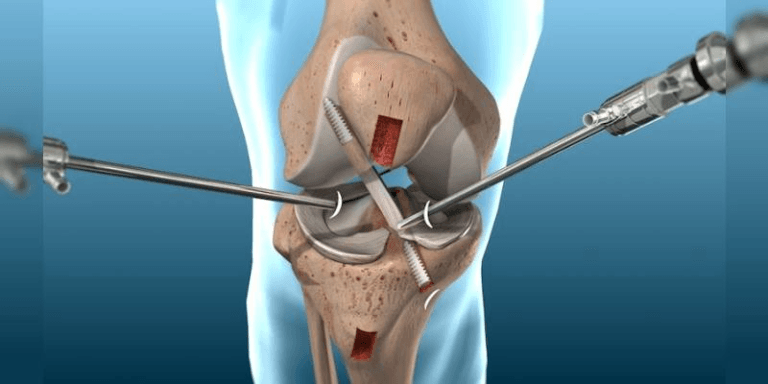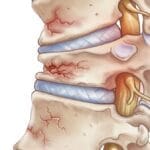Introduction
Knee arthroscopy is a minimally invasive surgical procedure that enables doctors to view and treat issues within the knee joint without requiring large incisions. This technique is employed to diagnose and address various knee problems effectively.
Procedure Details
During knee arthroscopy, a surgeon inserts a tiny camera, known as an arthroscope, into the knee joint. The camera transmits images to a video monitor, guiding the surgeon in using miniature surgical instruments. The small incisions required for this procedure lead to less pain and joint stiffness, often resulting in a quicker recovery compared to traditional open surgery.
Anatomy of the Knee
The knee joint comprises:
- Femur (thighbone)
- Tibia (shinbone)
- Patella (kneecap)
Other critical structures include:
- Articular Cartilage: Covers the ends of bones, aiding smooth movement.
- Synovium: A lining that lubricates the joint.
- Meniscus: Two cartilage pieces acting as shock absorbers.
- Ligaments: Four main ligaments stabilize the knee.
When is Knee Arthroscopy Recommended?
Knee arthroscopy is advised when nonsurgical treatments (rest, physical therapy, medications) fail to alleviate knee pain. It can address issues like:
- Torn meniscus
- Torn ligaments (ACL or PCL)
- Inflamed synovium
- Damaged articular cartilage
- Loose bone or cartilage fragments
- Patella problems
- Knee infections
Preparing for Surgery
Preparation involves:
- Evaluations and tests (blood tests, EKG)
- Admission instructions
- Anesthesia discussion (local, regional, or general)
Surgical Procedure
Once anesthetized, the surgeon makes small incisions to insert the arthroscope and other instruments. The procedure typically lasts less than an hour. After the surgery, incisions are closed with stitches or steri-strips, and a soft bandage is applied.
Recovery
Post-surgery recovery includes:
- Pain management with prescribed medications.
- Keeping the leg elevated and applying ice to reduce swelling.
- Dressing care to keep incisions clean and dry.
- Gradual weight-bearing as advised by the surgeon.
- Rehabilitation exercises to restore knee function.
Complications
Though rare, complications may include:
- Infection
- Blood clots
- Knee stiffness
- Accumulation of blood in the knee
- Bruising or swelling
Outcome
Recovery time varies depending on the damage addressed. Most patients can return to normal activities within 6 to 8 weeks, though high-impact activities might take longer. Lifestyle changes, such as switching from high-impact exercises to low-impact activities, may be necessary to protect the joint. More extensive operations might be required in the future for severe conditions.
Knee arthroscopy provides a less invasive option for diagnosing and treating knee problems, leading to faster recovery and less postoperative discomfort





